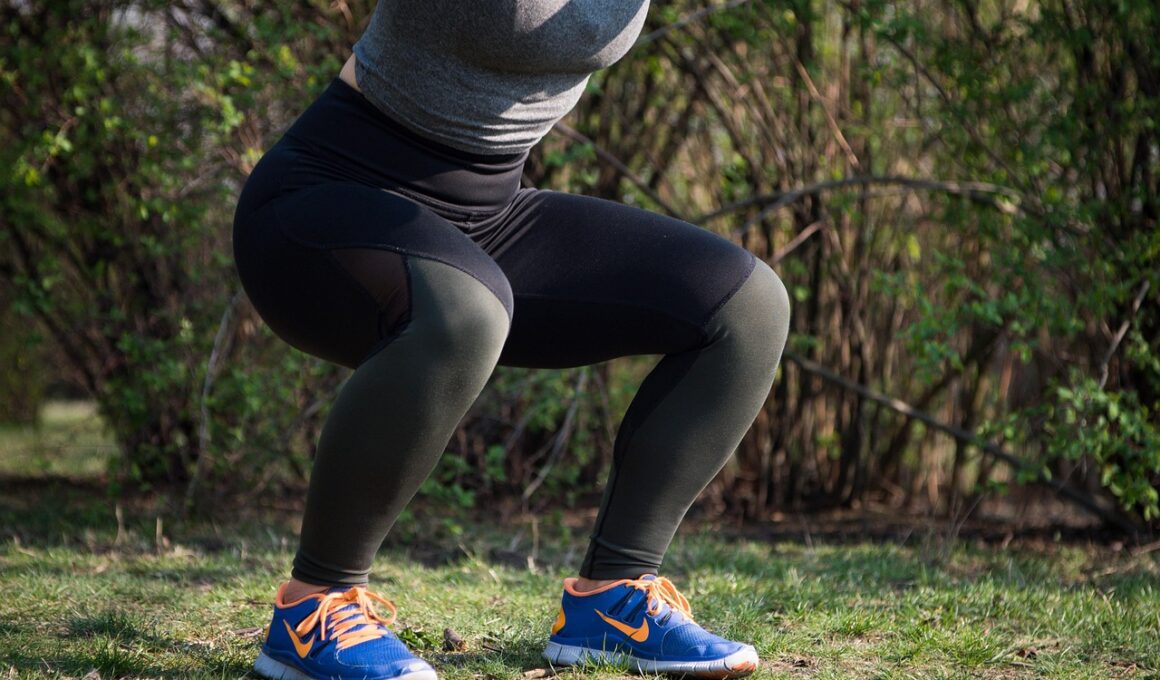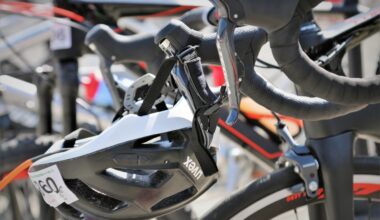Resistance Bands HIIT Workout for Accelerated Fat Loss
Using resistance bands for high-intensity interval training (HIIT) can significantly enhance your fat loss results. This is because these bands increase the intensity of your workout without heavy weights. To maximize your calorie burn, incorporating compound movements such as squats and presses is ideal. Resistance bands offer adjustable resistance, allowing you to target specific muscle groups effectively while minimizing the risk of injury. Adopting a structured plan is essential. Aim for workouts at least three times weekly, focusing on the core, legs, and upper body. Training at your own pace will help avoid burnout. Hydration is crucial, as it aids recovery and ensures optimal performance during each session. It’s important to combine strength training with cardio for comprehensive fat loss. This approach helps maintain lean muscle mass while shedding excess body fat. Additionally, tailoring your diet to complement your workout routine will further amplify results. Consider tracking your progress with measurements and photographs to stay motivated. A well-rounded approach that includes adequate rest is equally essential for achieving your fitness goals.
Creating an effective Resistance Bands HIIT workout plan for fat loss involves various exercises that deliver results. A sample session may combine moves like banded squats, lateral band walks, and glute bridges. You can start with banded squats, performing three sets of 15-20 repetitions. Ensure proper form by keeping your chest up and knees aligned with your toes. Next, include lateral band walks for two sets of 10-15 steps in each direction. This move targets your glutes while enhancing lateral movement. Follow that with glute bridges using resistance bands, emphasizing your core as you lift your hips. Aim for three sets of 12-15 repetitions. Adding in exercises like standing shoulder presses will also build upper body strength and stability. Transition quickly between exercises to maintain your heart rate and boost overall caloric burn. Remember to cool down and stretch after each session to enhance flexibility and recovery. Logging your workouts can help maintain accountability. Frequent, structured sessions focusing on different muscle groups will help achieve your objectives more efficiently. Consistency is key, so stay committed to your plan while allowing for appropriate rest and recovery.
Nutrition for Enhanced Fat Loss
Nutrition is a crucial aspect of any workout regimen focusing on fat loss. Pairing resistance bands with a well-balanced diet can optimize your results. First, ensure to eat a variety of protein sources, such as lean meats, legumes, and dairy. These will help repair muscles after workouts, facilitating recovery. Incorporate plenty of vegetables and whole grains to provide essential vitamins and minerals. Hydration remains vital; drinking water before, during, and after workouts boosts performance and recovery times. Consider consuming a pre-workout snack rich in carbohydrates and protein to fuel your session effectively. Popular options include bananas with nut butter or oatmeal. Post-workout nutrition is equally important; aim for a protein-rich meal within 30 minutes for optimal muscle repair. Strategies such as meal prepping can help maintain healthy eating habits amidst busy schedules. Avoid overly processed foods and sugary beverages, as they hinder progress. Tracking your caloric intake can also assist in understanding your nutritional needs better. Use apps or journals for effective logging. Combining proper nutrition with your resistance bands regimen will promote faster fat loss results.
The importance of warming up before any Resistance Bands HIIT workout cannot be overstated. A proper warm-up increases blood flow to muscles, improving flexibility and reducing injury risks. Start with light cardio, such as jogging in place or jumping jacks for about 5-10 minutes. Afterwards, perform dynamic stretches focusing on the major muscle groups you will be exercising. Arm circles, leg swings, and torso twists can effectively prepare your body for a rigorous workout. Similarly, cooling down should follow every workout. Gradual cooldown refines recovery by alleviating muscle tension and promoting blood circulation. Spend at least 5-10 minutes doing light activity such as walking or stretching exercises. This practice supports long-term mobility and flexibility. An effective cooldown can also decrease soreness and stiffness post-workout. As you advance in your resistance bands routine, consider varying your warm-up and cooldown exercises to prevent plateaus. Staying flexible with your approach to warming up and cooling down will keep your body well-prepared. Ignoring these two essential components of training can lead to setbacks and hinder your progress in your overall fitness journey.
Tracking Progress and Staying Motivated
Tracking your progress is essential when using resistance bands for weight loss. Keeping a record of your workouts helps you visualize your achievements. Consider taking weekly measurements or using a fitness app to log your routines. By recording the number of repetitions and sets, you can monitor improvements over time. Keeping photos taken at intervals will show noticeable changes in your physique, which is highly motivating. Setting short-lived but attainable goals can create a sense of accomplishment. Examples of such goals could include completing a specific number of workouts for a month or achieving a weight loss target. Celebrating these milestones reinforces your dedication. Additionally, consider joining online communities or fitness classes focused on resistance bands. Engaging with others provides support, accountability, and encouragement during your journey. Sharing successes can foster motivation, inspiring both you and your peers. Don’t hesitate to mix things up to maintain interest in your routines. Incorporate new exercises or adjust resistance levels for renewed challenges. The key to sustained progress lies in enjoying the process while staying committed to your resistance bands program. Positivity and adaptability will lead to overall better results.
Incorporating resistance bands into a HIIT routine can lead to improved functional strength and overall fitness. Focusing on compound movements not only engages multiple muscle groups at once, but it also employs the body’s core stabilizers. This effect contributes to higher caloric burn during workouts, further enhancing weight loss outcomes. One common mistake arises from selecting too easy resistance bands; it’s crucial to choose the right resistance level to challenge yourself without compromising form. As you progress, consider using bands with varying strengths. This progression ensures continued muscle engagement, promoting effective strength development. Keep your workouts dynamic by changing your routine every few weeks. This approach not only prevents muscle adaptation but also preserves enthusiasm for your training program. Engaging in varied exercises will keep your body guessing, allowing for optimal results while remaining fun. Integration of both strength and cardio within your HIIT sessions will shape a well-rounded fitness approach. Don’t include only resistance band exercises; mix in body-weight moves and cardio bursts. Your workout’s diversity will enhance not only strength but also cardiovascular fitness, leading to efficient fat loss. Make adjustments as needed, ensuring that progress stays aligned with your fitness goals over time.
Recovery is a fundamental aspect of any effective workout routine. Implementing proper recovery techniques after Resistance Bands HIIT workouts will enhance performance and support consistent fat loss. Methods to promote recovery include utilizing foam rollers or massage balls for myofascial release. These tools alleviate muscle tightness, improving blood flow and preventing soreness. Incorporating rest days is equally important. They allow muscles adequate time to heal and regenerate, which contributes to overall improvements. Active recovery, such as lighter workouts or stretching sessions, can also benefit your recovery. Nutrition further plays a significant role in how well your body recovers. Consume protein within your recovery window following workouts to foster muscle repair. Engage in mindful practices, such as yoga or meditation, to reduce stress. Chronic stress can adversely impact body composition goals. Sleep should not be overlooked; aim for at least 7-8 hours nightly. Prioritize adequate restorative sleep to maximize energy levels and general well-being. By integrating these recovery strategies, you can maintain consistent performance, prevent burnout, and strengthen your commitment to achieving your weight loss goals with resistance bands.


